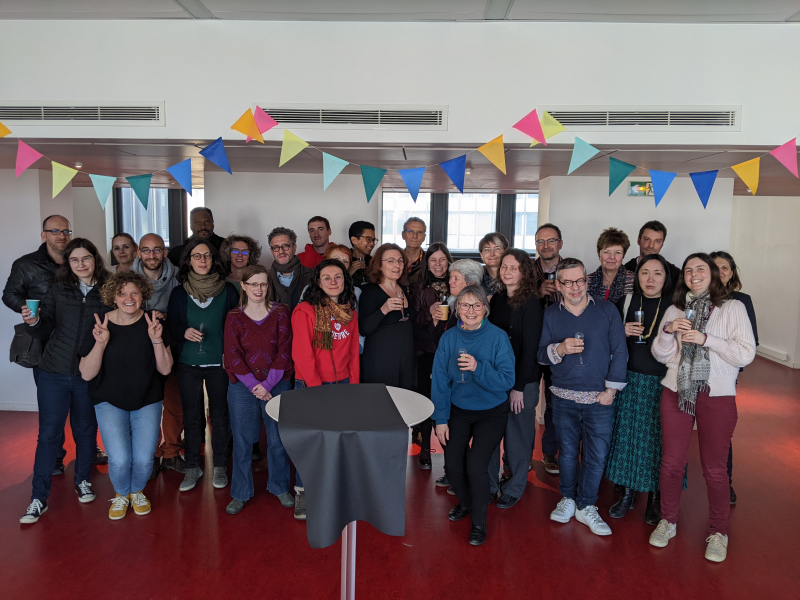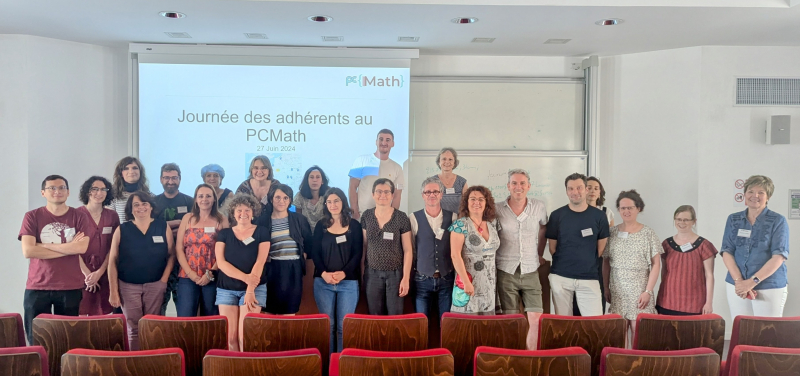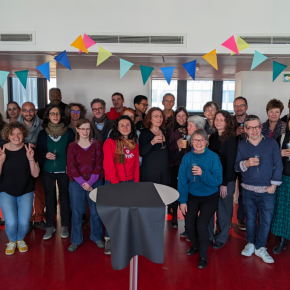PCMath receives the CNRS Crystal Medal 2024
The Plan de Conservation Partagée des Périodiques Imprimés en Mathématiques (PCMath) celebrated its 10th anniversary in 2023. The result of an initiative by Insmi and set up by the Réseau National des Bibliothèques de Mathématiques (RNBM) for the French mathematical community, PCMath was awarded the CNRS Crystal Medal in 2024. Nathalie Granottier, coordinator of the PCMath Technical Committee, looks back at the main advances and challenges of the Plan since its inception.

Could you please introduce yourself?
My name is Nathalie Granottier, Head of the Library of the Centre International de Rencontres Mathématiques (CIRM) and coordinator of the Technical Committee of the Plan de Conservation Partagée des Périodiques Imprimés en Mathématiques ("Shared Conservation Plan for Printed Mathematical Periodicals" aka PCMath).
What is PCMath, and why did you join the program?
There were several factors that motivated me to join this initiative. Firstly, the emergence of electronic periodicals led to a significant increase in rates, putting financial pressure on already limited budgets. Faced with this reality, it was clear that many libraries were making default unsubscription decisions to alleviate this pressing situation. A second point of concern was the growing observation of libraries massively unsubscribing from small associative and academic publishers, in favor of the big publishers and their big deals. This trend risked further marginalizing small publishers, who are essential to the diversity and richness of mathematical literature. It was crucial to act before this situation became irreversible, in order to guarantee access to current and past documentary resources for future generations.

Faced with these challenges, it seemed obvious to me that collaboration and a collective conservation strategy were essential. I'd heard of regional conservation plans to safeguard the daily press, and it seemed natural to apply a similar model in the field of mathematics. By pooling our efforts within the PCMath, we could better anticipate future challenges and work together to preserve essential resources for the future.
Since its creation in 2013, the PCMath has made significant progress, demonstrating its commitment to the preservation and promotion of mathematical periodicals. Here is an overview of the main achievements and key figures:
1. Corpus expansion
2. Growth of the network
3. Reporting quality
4. Tool development
5. Training and communication
6. Funding and support
What are the plan's objectives for the next 10 years?
For the next ten years, the PCMath has set itself several strategic objectives and challenges in order to effectively pursue its mission of preserving and promoting mathematical periodicals:
1. Finalize the selection of the ideal corpus of mathematical paper periodicals
2. Strengthen the security of the existing corpus
3. Reporting quality
4. Expanding the network
5. Diversify the corpus
6. Coordinating the long-term preservation of paper and electronic documents
In summary, the PCMath's orientations for the coming years aim to consolidate and extend its preservation actions, while adapting to technological developments and integrating new types of documents to meet the needs of the mathematical community.
How do you see the application of this conservation plan in your CIRM library?
We are currently positioned as a conservation center for 163 titles, 73 of which have the colref label. We take particular care with these collections. Our first obligation is to keep our collections up to date in the CFP and Sudoc. Although the conservation plan is not a shared acquisition plan, we do our utmost to maintain subscriptions for living titles for which we are conservation centers. We prioritize the treatment of these titles for bindery trains. We try to fill the gaps in titles for which we are a conservation hub, and we give conservation hubs that ask us to do so the booklets they need to fill the gaps. We have also introduced a labelling system on the shelves to facilitate the physical location of documents. This reinforces vigilance with regard to these titles, and in the event of an emergency, enables rapid identification of the documents to be saved as a priority. We use the conservation plan as a basis for weeding operations, which have enabled us to gain space to create a seminar room in the library or to reorganize work areas.

PCMath receives the CNRS 2024 Crystal Medal
Find the official CNRS announcement here. [link pending]
